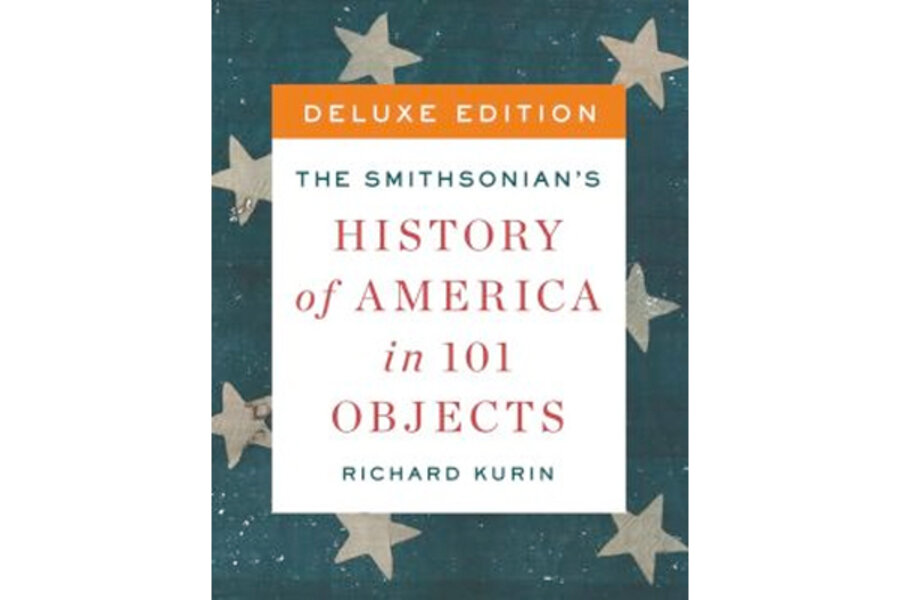'The Smithsonian's History of America in 101 Objects': why Richard Kurin chose as he did
Loading...
When Richard Kurin drew up a list of 101 items that define America’s past, three vintage books made the list.
Kurin is the author of a lavish new coffee table volume titled “The Smithsonian’s History of America in 101 Objects,” just published by Penguin Press in an attractive hardcover. When Kurin, a Smithsonian executive, surveyed the contents of all of the institution’s collections and compiled his inventory of iconic objects in the nation’s life, everything from the Declaration of Independence to Eli Whitney’s cotton gin to Muhammad Ali’s boxing gear made the cut. But Kurin’s list also includes three priceless volumes: Thomas Jefferson’s Bible, Harriet Tubman’s hymnal, and Sitting Bull’s drawing book.
Jefferson, who had unorthodox religious beliefs, distilled his own version of the Bible by trimming selected passages from traditional scriptural texts, pasting them onto sheets of paper, and then having the result professionally bound and labeled on the spine as “The Morals of Jesus.”
“Jefferson kept the book at his Monticello home, read it before bed, and drew lessons and wisdom from it,” Kurin tells readers. “He had no plans to publish it or distribute it broadly, knowing that many would take exception to his approach.”
Although Tubman, a leader of the Underground Railroad that helped American slaves escape to freedom, could not read or write, her hymnal was apparently a treasured possession. “The 112-page book with paper-wrapped board covers and cloth spine naturally falls open to the hymns read to her or that she sang, among them ‘Swing Low, Sweet Chariot,’ which was sung at her funeral,” Kurin writes.
Sitting Bull, a Native American leader eventually imprisoned by U.S. authorities after a long life of resisting the encroachment of tribal land by pioneer settlers, used a blank ledger book during his confinement to draw scenes from his life. “Having learned to write his name in English while in Canada, Sitting Bull signed each of the drawings,” Kurin notes.
Kurin mentions that he almost included on his list Ben Franklin’s printing press, a powerful symbol of America’s early literary culture and its quest for freedom from the British. “But the press we have at the Smithsonian might have been the one he used as a young man in England – maybe not the best illustration of the principle,” Kurin writes.
Danny Heitman is a Monitor contributor.







